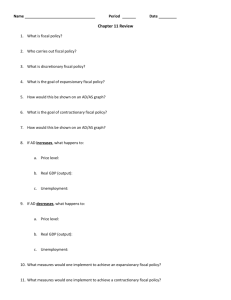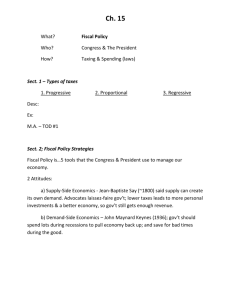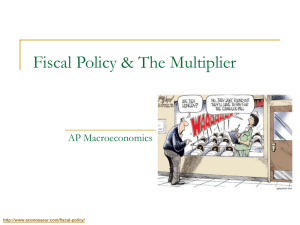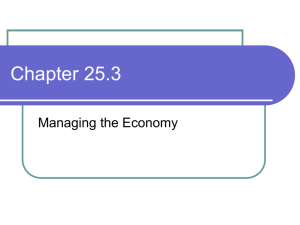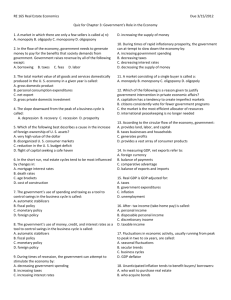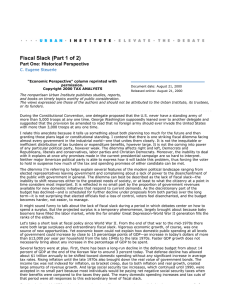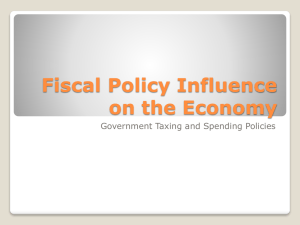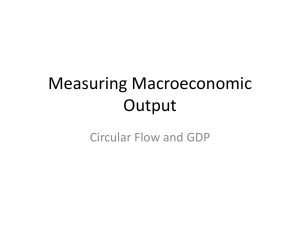Intro to Fiscal Policy
advertisement
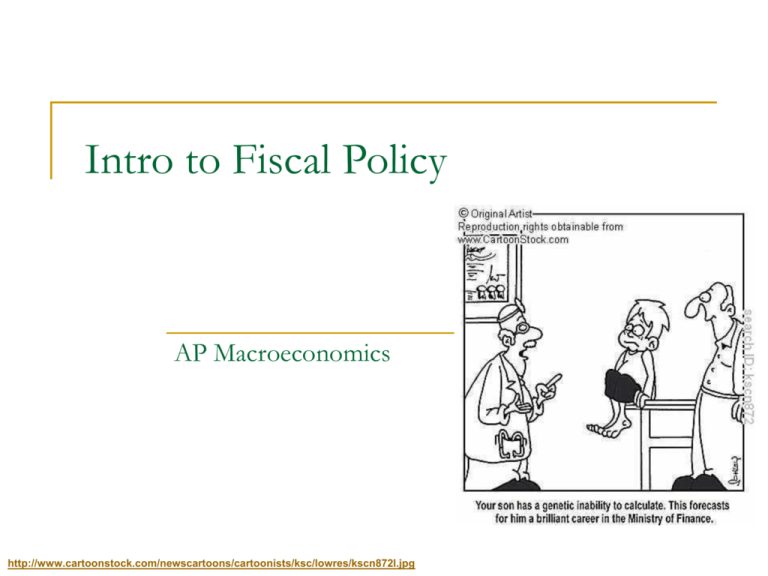
Intro to Fiscal Policy AP Macroeconomics http://www.cartoonstock.com/newscartoons/cartoonists/ksc/lowres/kscn872l.jpg Where we came from… As the price level increases, there’s a push for higher nominal wages to compensate for the higher price level. The increase in nominal wages will shift the aggregate supply curve to the left (one of those determinants). Down the road, the economy will return to the potential output level of Y*, but when it does it will be at a higher price level, P2. Visual 3.13, Unit 3 Macroeconomics, National Council on Economic Education, http://apeconomics.ncee.net Where are we going? In this lesson, we’ll learn about the two primary fiscal policy tools of government, and their affect on real GDP. We’ll practice manipulating the tools of fiscal policy and analyzing scenarios to determine appropriate fiscal policy. http://www.econosseur.com/assets_c/2008/11/LuckovichSantaBailo uts2008-11-28-thumb-510x375.jpg Fiscal Policy…what is it? 1) 2) Fiscal policy is one of the two demand management policies available to policy makers. There are two discretionary fiscal policy tools: Government spending Taxes http://www.languageguide.org/images/im/tools.png Let’s examine government spending… Government spending affects the economy directly by increasing the demand for goods and services. As soon as government spending increases, the multiplier process is initiated. This results in greater increase in total spending than what the government initially spent. This increases aggregate demand, which shifts the AD curve to the right. Increases price level and real GDP. Conjecture… What would a decrease in government spending do? Take a moment to think… What about the nd 2 tool…TAXES? Changes in taxes do not directly affect GDP. Changes in taxes affect disposable income. Increase taxes decrease disposable income decrease consumption and investment decrease in real GDP by more than the initial tax increase Side note: This change is felt indirectly through changes in consumption spending and investment spending. When taxes are increased, the multiplier process is initiated, disposable income is decreased. http://www.motivateplay.com/wp-content/uploads/2012/10/The-Four-Rs-of-WhyWe-Pay-Taxes-Daniel-Stoica-Accounting-Professional.jpg And now… Some resources: http://www.reffonomics.com/ Morton workbook Activity 30 Works Cited Economics of Seinfeld. http://yadayadayadaecon.com/clip/46/ Krugman, Paul, and Robin Wells. Krugman’s Economics for AP. New York: Worth Publishers. Morton, John S. and Rae Jean B. Goodman. Advanced Placement Economics: Teacher Resource Manual. 3rd ed. New York: National Council on Economic Education, 2003. Print. Reffonomics. www.reffonomics.com.

